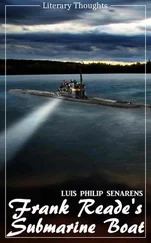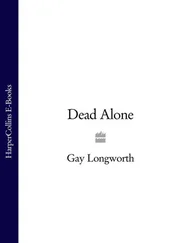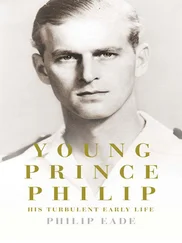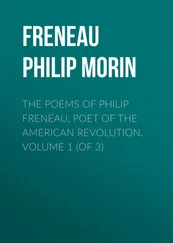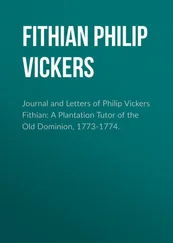28. The words of Dmitrii Gerasimov, interpreter to the mission, in A. V. Kartashev, Ocherkipo istorii russkoi tserkvi (2 vols., Moscow, 1992), vol. 2, p. 7.
29. On the burning of Kobyle, Fennell, Ivan the Great of Moscow, p. 70; on the war of 1501, see E. Christiansen, The Northern Crusades (London, 1997), pp. 255-7.
30. J. Tazbir, Poland as the Rampart of Christian Europe (Warsaw, n.d.), p. 32.
31. See M. Poe, Foreign Descriptions of Muscovy: An Analytic Bibliography of Primary and Secondary Sources (Columbus, Ohio, 1995), p. 11.
32. Fennell, Ivan the Great of Moscow, pp. 325—6.
33. Crummey, The Formation of Muscovy, pp. 134-5.
34. Mouravieff, The Church of Russia.
35. On the Kuritsyns’ careers, S. B. Veselovskii, D’iaki i pod’iachie xv-xvii vv (Moscow, 1975), pp. 278-80.
36. Crummey, The Formation of Muscovy, p. 87 and the maps in Bazilevich, Vneshnaia politika russkogo tsentralizovannogo Gosudarstvva, vtoraia polovina xv veka; on Dolmatov, Veselovskii, D’iaki i pod’iachie xv-xvii vv, pp. 155—6.
37. Pickhan, ‘The incorporation of Gospodin Pskov’ .
38. Sinitsyn, Tretii Rim, pp. 215-20.
39. M. Rywkin, ed., Russian Colonial Expansion to 1917 (London, 1988).
40. Skrynnikov, Gosudarstvo i tserkov’ na Rusi xiv-xvi vv, p. 362.
41. S. von Herberstein, Rerum Moscoviticarum Commentarii (Vienna, 1549). On the significance of Russians shaving off their beards, see Cornelia Soldat’s and others’ contributions of 2 February 2003 to Sergei Bogatyrev’s e-mail site sergei-bogatyrev@helsinki.fi.
5: IVAN IV AND THE FIRST IMPERIAL EXPANSION
1. See the account in the Nikon Chronicle as translated by Vernadsky et al., Source Book, vol. 1, pp. 133-4. Ivan’s legitimacy was to be reinforced by a charter issued by the Patriarch of Constantinople in 1561, which traced Ivan’s descent through Monomakh’s sister Anna to Constantine the Great, asserting his legitimacy by ‘lineage and blood’. The genetic association was, however, a political fiction. See ibid., p. 171.
2. See Poe, Foreign Descriptions of Muscovy, pp. 12-13; R- Frost, The Northern Wars 1558-1721 (London, 2000), pp. 78-80, 91; P. Longworth, ‘Russia and the Antemurale Christianitads’, in Gy. Szvak, ed., The Place of Russia in Europe (Budapest, 1999). See also a paper warning of the danger to central Europe if Russia should become strongly entrenched along the southern shoreline of the Baltic: G. V. Forsten, Akty i pis’’ma k istorii Baltiiskogo voprosa v xvi i xvii stoletiakh (St Petersburg, 1889), pp. 14-28.
3. See the contrasting views of R. Hellie, ‘What happened? How did he get away with it? Ivan Groznyi’s paranoia and the problem of institutional restraints’, Russian History, 14 (1987), 199-224; A. A. Zimin, Reformy Ivana Groznogo (Moscow, i960), R. Skrynnikov, Ivan Groznyi (Moscow, 1980), and A. Dvorkin, Ivan the Terrible as a Religious Type (Erlangen, 1992).
4. Nikon Chronicle excerpted in Vernadsky et al., Source Book, vol. 1, p. 133.
5. See B. Floria, Ivan Groznyi (Moscow, 1999), p. 17. Tales about the infant Ivan pulling the wings off a butterfly resemble (and are probably of the same German provenance) as the tales of Dracula — see M. Cazacu, L’Histoire du Prince Dracula en Europe Centrale et Orientale (Geneva, 1998).
6. For Moscow’s dealings with the various Mongol factions see Khodarkovsky, Russia’s Steppe Frontier, pp. 106-11. For the implications for further southward expansion see C. Lemercier-Quelquejoy, ‘Co-optation of the elites of Kabarda and Daghestan in the sixteenth century’, in M. Bennigsen Broxup, ed., The North Caucasus Barrier: The Russian Advance towards the Muslim World (London, 1992), pp. 18-42.
7. Communication from Jukka Korpela posted on M. Poe site, 29 March 2000.
8. R. Hakluyt, The Principal Navigations Voyages Traffiques and Discoveries of the English Nation (12 vols., Glasgow, 1908), vol. 3, p. 384.
9. Nolde, La Formation de l’Empire Russe, vol. 1, pp. 77-8.
10. J. Martin, ‘Peculiarities of the pomest’e system’, in Gy Szvak, ed., Muscovy: Peculiarities of its Development (Budapest, 2003), pp. 76—87.
11. See Floria, Ivan Groznyi. Also Khodarkovsky, Russia’s Steppe Frontier, pp. 102-45.
12. Nolde, La Formation de l’Empire Russe, vol. 2, pp. 303-5.
13. Bantysh-Kamenskii, Obzor vneshnykh snoshenii Rossii (po 1800), Pt 1, vol. 1, pp. 9-7.
14. A. Kappeler, Russland als Vielvölkerreich (Munich, 1992), p. 43; and see ch. 8 below.
15. Vernadsky et al., Source Book, vol. 1, 1972, p. 142; B. Rudakov, Entsiklopedicheskii slovar ’, vol. 3 (St Petersburg, 1900), pp. 803-5; Nolde, La Formation de l’Empire Russe, vol. 1, pp. 132-3.
16. For translations of the basic Russian account, see T. Armstrong, ed., Yermak’s Campaign in Siberia (London, 1975), and W. Coxe, Account of the Russian Discoveries between Asia and America (4th edn, London, 1803), pp. 418ff.
17. E. Winter, Russland und das Papstum (Berlin, 1960), p. 179; Longworth, ‘Russia and the Antemurale Christianitatis’; on England, see S. Baron, Muscovite Russia (London, 1980), Essay III, pp. 42-63; also M. Anderson, Britain’s Discovery of Russia (London, 1958).
18. See Frost, The Northern Wars, pp. 24 and 77. Russia’s administrative policy in Livonia has been examined by N. Angermann, Studien zur Livlandpolitik Ivan Groznyjs (Marburg, 1972); see particularly pp. 25ff.
19. The Russian Invasion of Poland in 1563 — a translation by J. C. H[otten] of Memorabilis et perinde stupenda de crudeli Moscovitarum Expeditione narratio (Douai, n.d.).
20. Among the most useful contributions to the huge literature on the oprichnina are S. B. Veselovskii, Isledovaniia po istorii oprichniny (Moscow, 1963), esp. here pp. 133ff., and Zimin, Reformy Ivana Groznogo. My account also draws on Fiona’s Ivan Groznyi. It is worth noting that Vipper, the leading apologist for Ivan, was an anti-Bolshevik who fled Russia at the Revolution and consented to return only at the approach of war in 1941.
21. See I. Pryzhkov, Istoriia kabakov v Rossii (Moscow, 1991). On the origins of the commune, see R. E. F. Smith, Peasant Farming in Muscovy (Cambridge, 1977).
22. Floria, Ivan Groznyi, pp. 172f, 168ff.
23. Ibid., p. 179.
24. This is argued by Janet Martin in her Medieval Russia 980—1584 (Cambridge, 1996), pp. 347-8.
25. That the Duma (the Russian word for ‘council’) was a formalized institution at this stage is a construct of historians who assume too much.
26. Floria, Ivan Groznyi, p. 393.
27. Adapted from J. L. I. Fennell’s translation of Ivan’s letter of 1564 in his The Correspondence between Prince A. M. Kurbsky and Tsar Ivan IV of Russia 1564-1579 (Cambridge, 1955).
28. Floria, Ivan Groznyi, pp. 393—4.
29. S. B. Veselovskii, Trudy po istochnikovedenii i istorii Rossii v periode feodalzma (Moscow, 1978), p. 153.
30. See Dvorkin, Ivan the Terrible as a Religious Type, p. 105. Chapter 8 of this work, which draws on recent as well as older scholarship, is helpful on the oprichnina.
31. Floria, Ivan Groznyi, pp. 233—43.
32. E. Chistiakova, ed., N. Rogozhin, compiler, et al., (Oko vsei velikoi Rossii’: ob istorii rossiiskoi diplomaticheskoi sluzhby xvi—xvii vekov (Moscow, 1989), pp. 54ff.
Читать дальше





![Stephan Orth - Behind Putin's Curtain - Friendships and Misadventures Inside Russia [aka Couchsurfing in Russia]](/books/415210/stephan-orth-behind-putin-s-curtain-friendships-a-thumb.webp)
